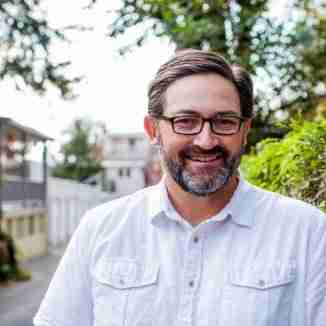
Immune-oncology Leaders Converge on Montgomery College for Bio-Trac’s Multiplex Immunofluorescence Symposium
September 17, 2019
Bio-Trac, a leading biotechnology training organization in the BioHealth Capital Region (BHCR), just hosted its second annual Multiplex Immunofluorescence in Immune-Oncology Workshop and Symposium at Montgomery College’s Bioscience Education Center.
Multiplex Immunofluorescence (mIF) in Immune-Oncology (I/O) is a rapidly advancing technology that aids researchers exploring the potential medical value of specific biomarkers. mIF also empowers researchers to better understand the role the Tumor Microenvironment (TME) plays in I/O.
“It has always been Bio-Trac’s mission to serve the scientific community whether it is through our hands-on workshops or scientific symposiums. Events like the AstraZeneca I/O Immunofluorescence Multiplexing Workshop and Symposium gives researchers an opportunity to be exposed to the latest relevant information in the field that will help further their laboratory research,” stated Bio-Trac’s director Mark Nardone.
The two day symposium, sponsored by AstraZeneca and Akoya Biosciences, drew researchers from across the country eager to network and attend workshops led by two dozen leading experts on the subject. The event drew nearly double last year’s attendance and a second day was added, reflecting the growing excitement around this promising technology.
Dr. Jaime Rodriguez-Canales, senior pathologist at AstraZeneca, and AstraZeneca research scientist II Dr. Michael Surace kicked off the event by providing an overview of the advantages of mIF over traditional Immunohistochemistry (IHC). Both Dr. Rodriguez-Canales and Dr. Surace served as workshop directors for the symposium and worked with Bio-Trac to organize the comprehensive workshop program.
“We recognize that multiplex immunofluorescence is important for the development of the next generation of biomarkers for immune-oncology. Because the field is developing rapidly, meetings like this not only help us stay current with the technology, but they also foster collaboration among scientists in academia, government, and industry to address common challenges in multiplex imaging…,” stated Dr. Surace.
Dr. Bernard Fox, an internationally recognized immunologist and I/O thought leader, gave the event’s keynote, “A Vision for Tailoring Cancer Immunotherapy and the Hurdles Ahead,” which addressed the vast potential for mIF to help researchers develop new and better cancer cures while noting key “unknowns” that will require the field to “keep its options open.”
“The practice of oncology has undergone a transformation…we now know that the immune system is the agent that improves outcomes and cures people with metastatic cancer. This is a fundamental shift in our understanding of cancer. 90% of cancer patients that achieved a complete response were alive in 20 years or more,” stated Dr. Fox.
“It’s 2019 and we still don’t know why these patients were cured. It’s kind of hard to believe. But I’m incredibly excited about the work being done on checkpoint blockers and other agents. We won’t know for another 20 years whether these patients are actually cured. And we just don’t know why some drugs are failing… I think Multiplex is going to play a critical role in creating best practices for patient selection for immuno-oncology combinations, dose selection and optimization and how we can assess in an individual patient given a combination of agents that a drug is having the desired effect,” he added.
As noted by Dr. Rodriguez-Canales in his symposium introduction, mIF is a powerful new tool for I/O discovery of new biomarkers. Scientific evidence shows that it has a higher predictive value when compared to PDL1, IHC and TMB (Tumor Mutational Burden) and can be highly consistent and compatible for clinical trials, particularly when automated.
“The challenge now is how do we turn more ‘cold’ tumors to ‘hot tumors’?…We need to better understand what antigens patients are recognizing…We need to learn more about how we can turn a patient’s immune reaction back on to increase cytotoxicity. Understanding the mechanism of cure is critical…We need to keep our options open and mIF is a great tool to help us monitor and understand adaptive response,” stated Dr. Fox.
To answer these and other pressing questions, innovation and advancement in mIF technology is essential for the development of more effective new I/O therapies and therapeutic combinations.
Akoya Biosciences, a biotech company located just outside Boston, is leading the way in providing the I/O field with the tools necessary to fully realize mIF’s potential. Following Dr. Fox’s keynote, Akoya’s vp of translational and scientific affairs Cliff Hoyt spoke about his company’s efforts to advance mIF’s translational impact.
“Cell behavior is largely a function of its microenvironment and the only practical way to observe what’s actually going on is to stain with multiple markers to reveal biology and cellular mechanisms,” stated Hoyt.
Hoyt suggested the more markers the better, offering that mIF translational advancement is critical to discovering new therapeutic targets and to better understanding spatial biology, which the evidence suggests is a key to improving patient outcomes.
Akoya offers researchers automated technology and a comprehensive platform to enhance biomarker discovery and translation to the clinic. CODEXⓇ, used in the discovery phase, is an ultra-high parameter biomarker discovery technology that is the first of its kind; it is a fully automated, integrated system that can generate up to 50 biomarkers in a single run. Phenoptics is Akoya’s translational platform for predictive biomarkers that includes its Vectra instruments, Opal reagents and inForm software that enables a deeper understanding of cell-to-cell biology.
Grant Carlson, Akoya’s technical application scientist, believes symposiums on Multiplex Immunofluorescence in Immune-Oncology are essential to advancing the field: “Akoya Biosciences, ‘The Spatial Biology Company’, is committed to developing powerful imaging tools to enable scientists and clinical researchers gain a better understanding of complex diseases such as cancer…. Bio-Trac and AstraZeneca have brought together world leaders in tissue multiplexing using platforms such as Akoya’s Vectra Polaris. As a leader in tissue multiplexing, Akoya is honored to provide their widely used Vectra Polaris platform at Bio-Trac to help foster discussion of best practices for a rapidly growing field.”
“We are just starting to scratch the surface of what can be done. Future improvements in diagnostic accuracy are likely to be made by increasing the number of markers detected in the IHC/IF format and by developing multiplex, multimodal approaches that potentially combine GEP and/or TMB with mIHC/IF,” stated Hoyt.
Excitement is building around the potential for mIF in I/O to create better outcomes—
and potentially cures—for cancer patients across the globe. Events like Bio-Trac’s symposium will continue to play an integral role in the advancement of mIF down the translational continuum. Finding new therapies and cures is not just about innovative technology, it’s also about bringing the right people together to share ideas, collaborate and forge new paths forward in I/O.
“We are excited to put together the 2020 program with Bio-Trac,” stated Dr. Surace.
Given this year’s attendance numbers, the research community certainly looks towards next years symposium with excitement, too.
- About the Author
- Latest Posts
Steve brings nearly twenty years of experience in marketing and content creation to the WorkForce Genetics team. He loves writing engaging content and working with partners, companies, and individuals to share their unique stories and showcase their work. Steve holds a BA in English from Providence College and an MA in American Literature from Montclair State University. He lives in Frederick, Maryland with his wife, two sons, and the family dog.





